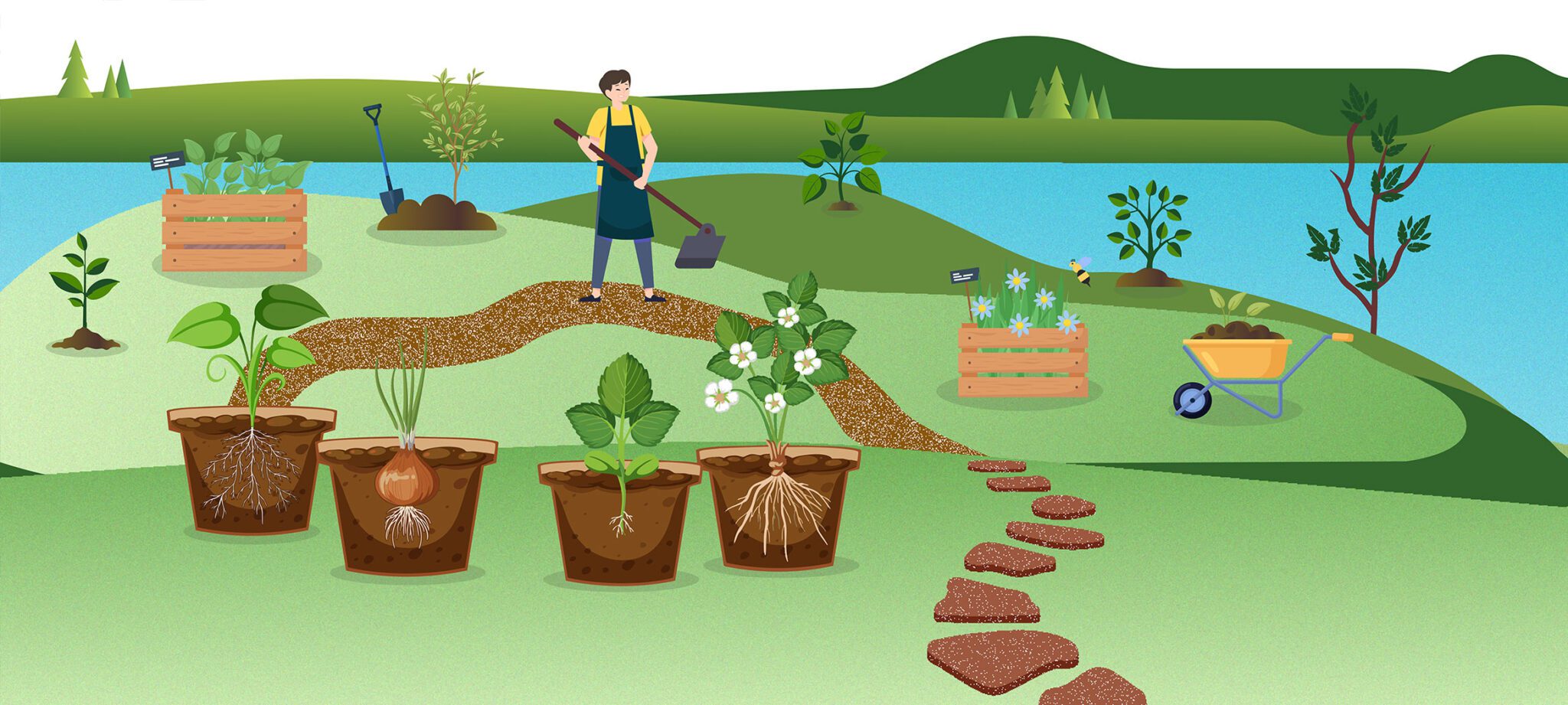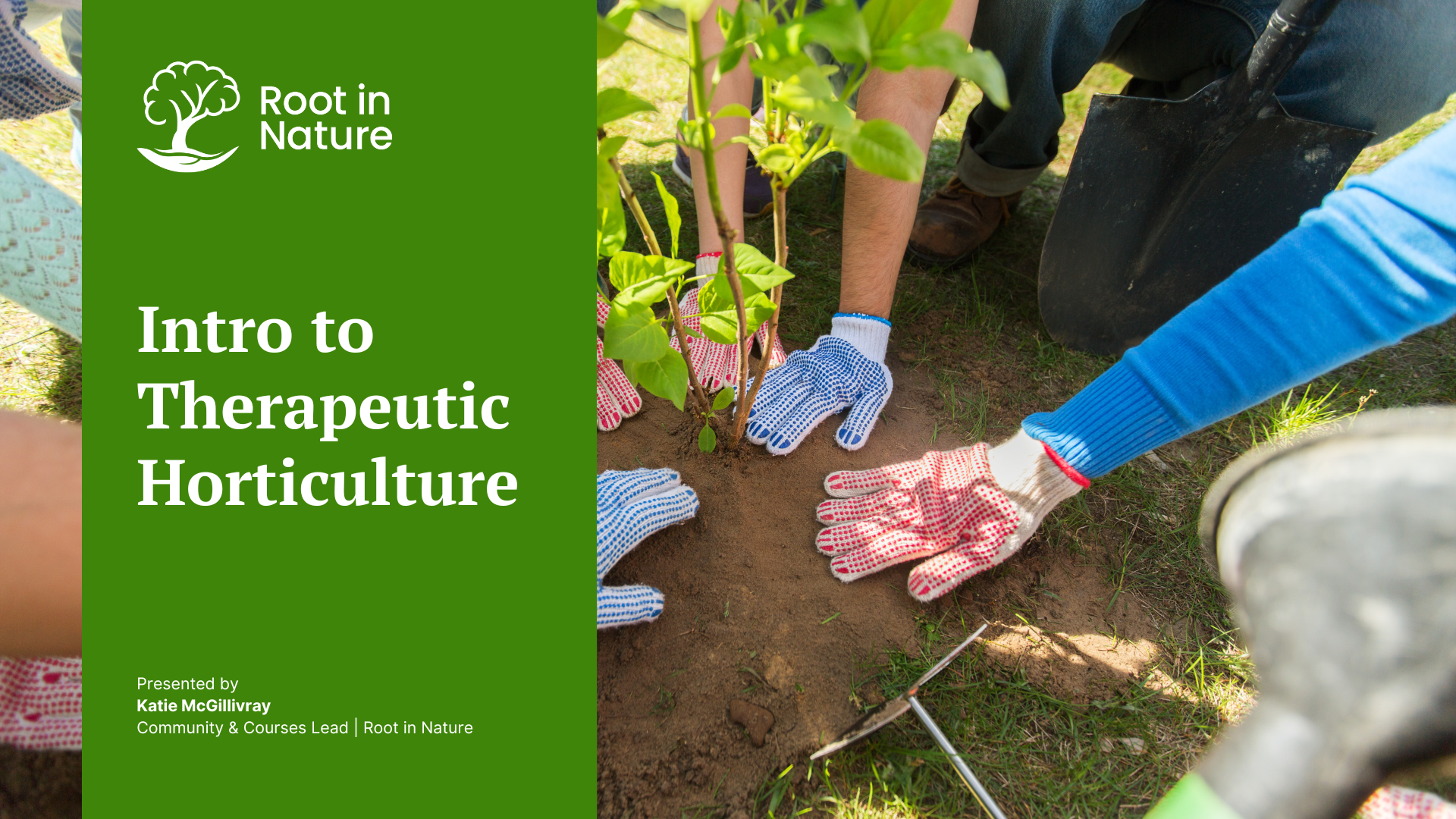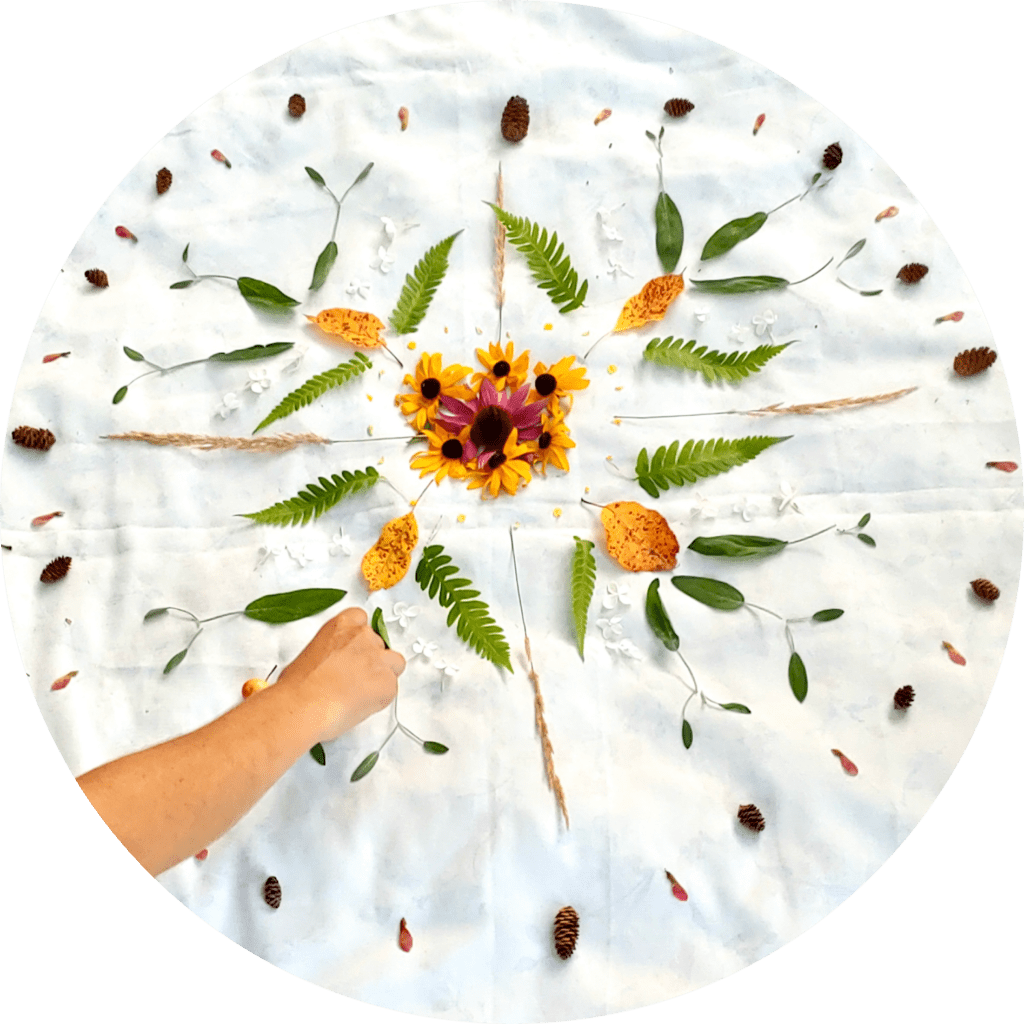
![Header visuals [Recovered]-08 Header visuals [Recovered]-08](https://rootinnature.ca/wp-content/uploads/2025/05/Header-visuals-Recovered-08-scaled.png)
Beginner
Taking Root
This path is for new or aspiring practitioners just beginning their therapeutic horticulture journey. Whether you’re a therapist, educator, caregiver, or volunteer, you’ll gain clarity on what therapeutic horticulture is, how it differs from clinical horticultural therapy, and how to begin integrating nature into your work with others.

If you’ve found your way here, chances are you already feel the pull: a desire to help others, a love of plants, and a growing curiosity about how those two things might work together in a more purposeful way.
That’s exactly where many of our students begin.
You might be a recreational therapist, a professional horticulturist, garden volunteer, social worker, or someone who simply believes that nature has a role to play in healing and connection—but you’re not quite sure how to get started with therapeutic horticulture.
That’s where we come in—to help you get clear on what therapeutic horticulture is and how it might fit your goals.



Which Path Fits You: Therapeutic Horticulture or Horticultural Therapy?
We created a short video to walk you through the difference between Therapeutic Horticulture (TH) and Horticultural Therapy (HT) in clear, simple language. Understanding the distinction will help you decide which path makes the most sense for your goals and the kind of work you want to do.

Horticultural Therapy (HT)
is a clinical practice facilitated by a registered horticultural therapist. It involves structured, goal-oriented activities designed to achieve specific therapeutic outcomes within an established treatment or rehabilitation plan.
Therapeutic Horticulture (TH)
TH on the other hand, is a more community-based practice that can be facilitated by non-clinical professionals and volunteers that have received specialized training in TH. TH utilizes nature-based activities to support broader goals that address human health and wellbeing in a variety of settings, without the need for clinical oversight. However, many clinical professionals choose to combine their clinical education and specialized TH training to achieve high-quality, clinically significant treatment outcomes.

By watching the video, you’ll gain insights into how individuals from diverse backgrounds apply these practices in settings like community gardens, schools, healthcare facilities, and personal spaces.
At Root in Nature, we offer education and support in therapeutic horticulture, not clinical horticultural therapy. That said, the GrowTH Network is designed to be a welcoming and valuable resource for both TH and HT practitioners, because regardless of title or setting, we share common ground in our values, goals, activities, and the importance of community.
If, after watching the video, you feel that HT is a better fit for your path, you can explore formalized training through organizations like the American and Canadian Horticultural Therapy Associations. At Root in Nature, we’re here to support you in whichever direction feels right for you.
If you’re looking for a path that’s people-centered, adaptable, and rooted in real-life application, Therapeutic Horticulture might be your next step.




Your First Step: Introduction to Therapeutic Horticulture
If you’re ready to begin integrating plants and people in your professional work, but don’t know exactly how to start, our Introduction to Therapeutic Horticulture course was designed for you.
This self-paced online course provides a comprehensive introduction to the historical and theoretical foundations of therapeutic horticulture. Through practical and inspiring real-life examples, you’ll discover how, why, where, and with whom TH is practiced. Whether you’re a therapist, educator, activity coordinator, or wellness professional, you’ll gain a clear understanding of how practitioners use adaptive tools, evidence-based techniques, and therapeutic environments to support participants in achieving emotional, physical, social, cognitive, spiritual, and vocational goals.What Makes Root in Nature Different? Our training is:
- Flexible – Learn on your schedule, at your pace
- Accessible – No formal therapy background required
- Applied – Centered on real-world use, not just theory
- Supportive – We’re with you for the full journey, not just one course
If you’re interested in learning how to plan and adapt activities for diverse populations, ensure safety and accessibility, and align your programming with therapeutic goals, this course is an ideal starting point for your journey into the field of therapeutic horticulture.
Join the GrowTH Network
When you’re just starting out in therapeutic horticulture, one of the most powerful tools you can have is connection—to resources, guidance, and others who understand the work you’re doing.
The GrowTH Network is your professional community: a place where new and experienced practitioners alike come together to share knowledge, solve challenges, and grow their confidence.
Inside the GrowTH Network

Activity Database
A searchable collection of therapeutic horticulture activities categorized by population, setting, and therapeutic goal – ready to implement or adapt.

Resource Library
A robust curated collection of practical, customizable tools to support your programs.

Monthly Practitioner Support Calls
Live, guided conversations with an experienced TH/HT professional and fellow practitioners to share challenges, ideas, and encouragement.

Online Events with Guest Experts
Ongoing professional development opportunities tailored to this field and your real-world questions.



Rooted in Research
When you’re just starting out with therapeutic horticulture, it’s common to feel the need to “prove” that it works—to your supervisor, your colleagues, or even to yourself.
That’s where the Root in Nature Research Database comes in.
This curated collection of studies, articles, and case examples is designed to help new practitioners like you feel more confident in the field, and better equipped to advocate for nature-based approaches in your workplace or community.
You’ll Find:
- Peer-reviewed research on the physical, mental, cognitive, and emotional impacts of nature-based interventions
- Studies and articles organized by population (e.g., dementia, autism, veterans, youth) and setting (e.g., long-term care, schools, community programs)
- Examples you can reference in funding proposals, program planning, or stakeholder meetings
- Digestible summaries
You don’t have to rely on instinct alone. There’s a growing body of science supporting what you already feel in your gut: that working with plants can change lives.
Stay Connected
Subscribe to our newsletter for the latest research, practical strategies, community features and events.
Follow us on Instagram, YouTube and Linkedin for resource giveaways, TH in action and seasonal inspiration.
Explore our blog for fresh insights, deeper dives on topics and real-life stories to inspire your TH practice.

Join the Community
Benefits for Clients
Benefits for Clients
Practitioners can benefit from using plants and nature in their therapeutic approach in several ways:
- Enhancing the environment: Plants and nature create a calming and relaxing environment that can promote wellness and enhance the overall atmosphere of a therapy session.
- Reducing stress: Exposure to plants and nature has been shown to reduce stress and anxiety levels, which is beneficial for individuals who are experiencing mental health conditions or chronic illnesses.
- Improving physical health: Spending time in nature and around plants can promote physical activity and exercise. Recreation therapists can incorporate therapeutic horticulture activities into their therapy sessions to promote physical health.
- Boosting mood: Being in nature and around plants can boost mood and help individuals feel more positive and optimistic. This can be especially helpful for individuals who are experiencing depression or other mood disorders.
- Promoting social connections: Group therapeutic horticulture sessions can provide opportunities for social interaction and connection, as well as promote bonding and create a sense of community.
Benefits for Practitioners
Benefits for Practitioners
Practitioners such as recreation therapists may benefit from taking therapeutic horticulture training for several reasons:
- Specialized knowledge: Root in Nature’s training program provides specialized knowledge and skills related to using plants, gardening, and nature as therapeutic tools. This can help recreation therapists better understand the therapeutic benefits of horticulture and how to effectively incorporate it into their therapy sessions.
- Professional development: Training in therapeutic horticulture can be a valuable form of professional development for practitioners. It can enhance their skills and knowledge, making them more effective in their role as a therapist.
- Expanded therapy options: With therapeutic horticulture training, recreation therapists can expand the range of therapy options they can offer their clients. Incorporating plants and nature into their sessions can provide clients with unique and effective therapeutic experiences.
- Improved client outcomes: Horticultural therapy has been shown to be effective in improving a range of outcomes for clients, including mental health, physical health, and overall quality of life. By taking Root in Nature’s training, recreation therapists can learn how to effectively use horticulture to improve their clients' outcomes.

